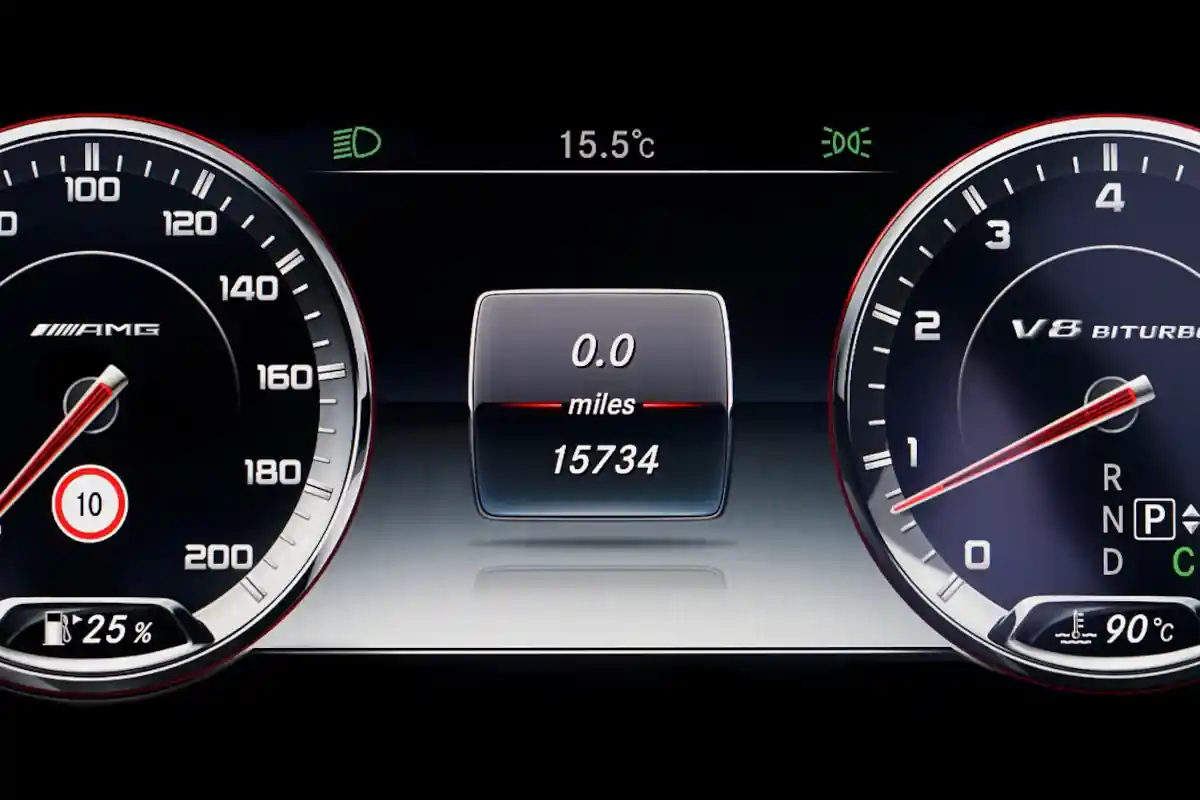You probably already know that your odometer is there to measure the car’s total mileage as the vehicle is moving.
This means that it keeps the record of all of the miles that the car has driven throughout the very first time you started driving it.
But while we know that the odometer reading shows us numbers that reflect the car’s mileage, are these numbers measuring a scalar or a vector quantity?
Odometer Measure Scalar or Vector
The odometer measures a scalar quantity. That’s because the odometer only records magnitude that is in the form of the car’s mileage. Meanwhile, when you talk about vector quantities, you are talking about quantities that have magnitude and direction. The odometer does not record direction.

In case you forgot your basic physics class back in high school, one of the things that you need to understand about your odometer is that this is an instrument that only measures quantity and not direction.
As such, it cannot qualify as something that measures a vector quantity considering that the odometer does not take into consideration direction.
But for you to understand that even further, let’s go into this topic a bit further.
What are scalar and vector quantities?
When it comes to your odometer, the one thing you already know about it is that it measures the vehicle’s total mileage based on how many miles the entire vehicle has traveled.
It basically does so by counting the revolutions that the tires have made and then using an equation to calculate the distance that the car has traveled based on those revolutions.
But one of the things that you might need to know when it comes to the odometer is whether or not the odometer records a scalar or a vector quantity.
This can be something interesting on your part because of the very fact that physics actually plays a big role in cars and how they function.
And while a lot of you may think of physics and math as boring topics, understanding these subjects can make it easier for you to understand how the world of cars works.
So, before we actually talk about whether or not the odometer records scalar or vector quantities, let’s talk more about what scalar and vector quantities are so that you can have a good understanding of why the odometer is one or the other.
Scalar
When you talk about scalar quantities or simply scalars, we are talking about things that are measured based on the scale alone.
That means that we are only basing the measurement on the magnitude of the object and how it measures up on certain scales that are capable of measuring it. Scalars are often accompanied by units of measurements that label them.
For example, when we talk about weight, this is a scalar quantity because of how it is measured based on magnitude, which is your weight.
It is also accompanied by a label such as pounds or kilograms, whichever of the two might be more convenient for you to use.
So, in relation to cars, things such as speed are scalar quantities because we are talking solely about the magnitude of how fast the car is going without even taking into consideration other factors.
This is why, when you are talking about the speedometer, it measures in miles per hour, which is a scalar quantity that tells you how fast your car is going.
Vector
On the other hand, when we are talking about vector quantities or simply vectors, we are now factoring in something such as “direction” into the equation.
So, in short, vectors are concerned with both magnitude and direction.
And that is why when a certain quantity is measured while giving consideration to direction, this is now a vector.
For example, displacement is a vector because of how displacement talks about the total distance covered by something relative to its position.
So, if you were to move from point A to B while covering 10 miles but you turned around and moved to point A once again, your total displacement is 0 because you still returned to the same spot you were originally at before you started moving.
But, if we talked about distance, which is a scalar, the answer would be 20 miles because you only considered the distance covered by the travel and not the displacement.
In relation to cars, while speed or velocity is a scalar measure, acceleration is now a vector because this takes into consideration direction. That’s because acceleration is based on the difference in speeds in a given time period relative to the direction your car is going.
As such, because direction plays a role in measuring acceleration, it is a vector quantity.
Does the odometer measure scalar or vector?
Now that you understand more about scalars and vectors, you might be wondering what the odometer is measuring.
So, is the odometer measuring a scalar or a vector when it is measuring the total mileage of the car?
The answer is simple. So, when you actually think about it, the odometer measures the total distance that your car has driven based on the revolutions that its tires have made.
The operative word there is “distance”.
When we talked about scalars and vectors, we talked about how distance is actually a scalar because it doesn’t concern itself with direction but only the total area that was covered by a moving object while it is moving.
But, to make it simpler to understand, we’ll talk about it using a simple example.
Suppose that you drove your car around a square perimeter that is exactly 1 mile on each of the four sides. You start off from corner A and then you drive to corner B. This means that you have covered a total distance of 1 mile, and that distance will be recorded in your odometer.
So, from corner B, you drove to corner C on the square perimeter, and that will record another 1 mile on your odometer. You drove from C to D and finally from corner D back to corner A.
This means that you basically drove around the entire square perimeter and covered a total of 4 miles. All this will be reflected on your odometer as a scalar quantity.
However, if the odometer measured a vector quantity, the odometer won’t reflect 4 miles because you are now factoring direction here.
Because you simply drove around a square perimeter and went back to where you were, your displacement actually is 0 because the distance between you and your original position never changed.
But if you drove from point A to point B only, the displacement will be 1 mile because the distance between you and your original position relative to the direction you traveled is 1 mile.
From that example we gave you, it becomes easier to understand that the odometer measures a scalar value.
Your odometer won’t care about your original position or which direction you are moving because all it cares about is the total distance that your car traveled.
So, even if you only drove around your block the entire time, the odometer will still measure the miles you accumulated because it doesn’t care about where you started and where you ended as it only factors in the distance covered by the car while you were driving.
This is why the odometer measures a scalar value and not a vector quantity.



